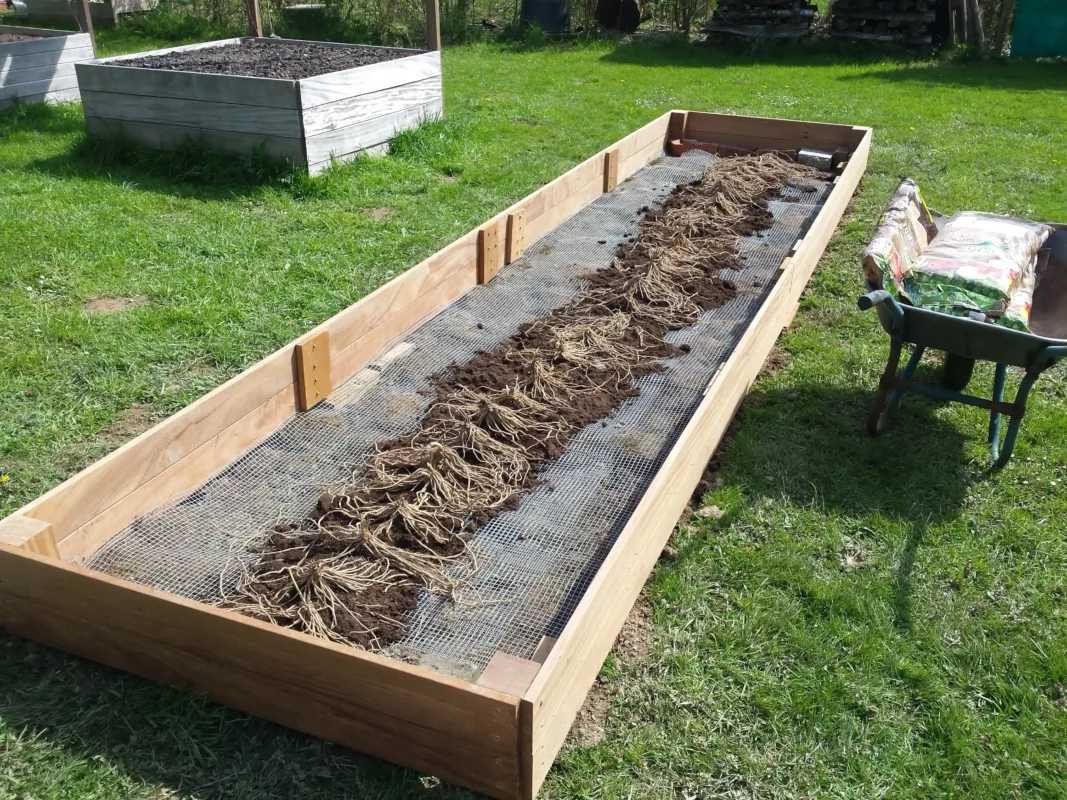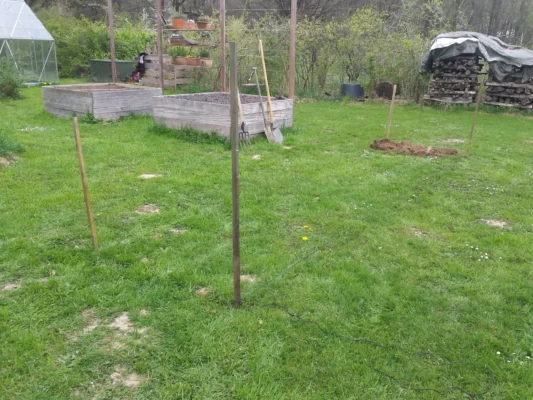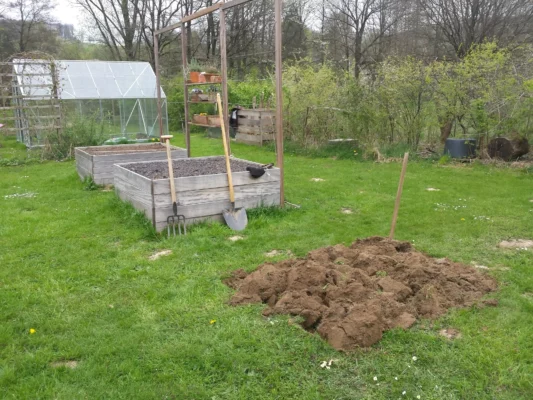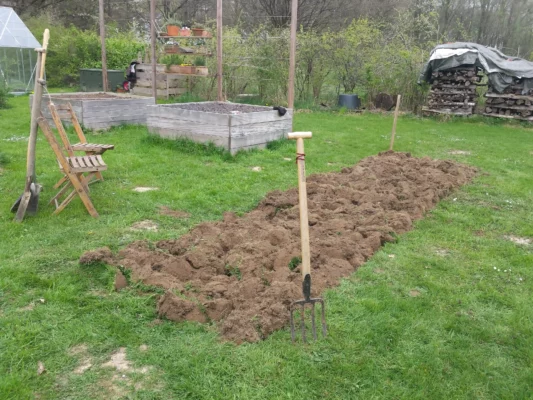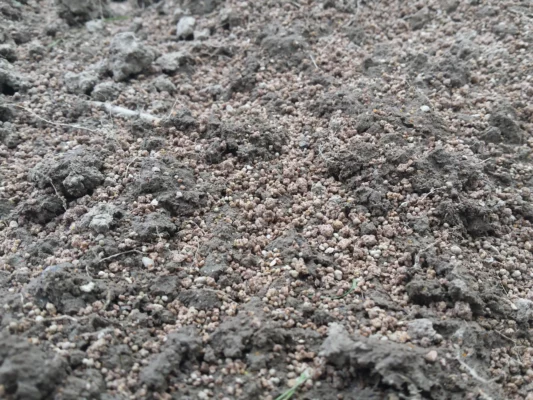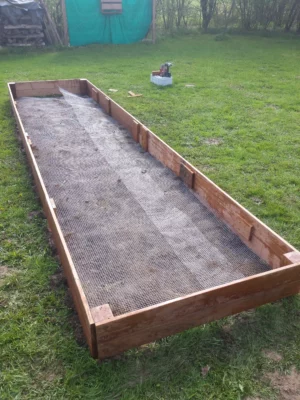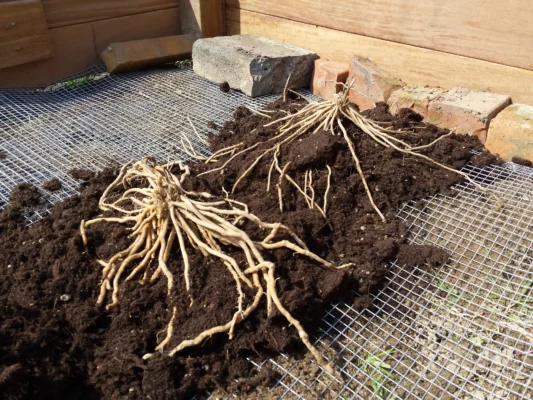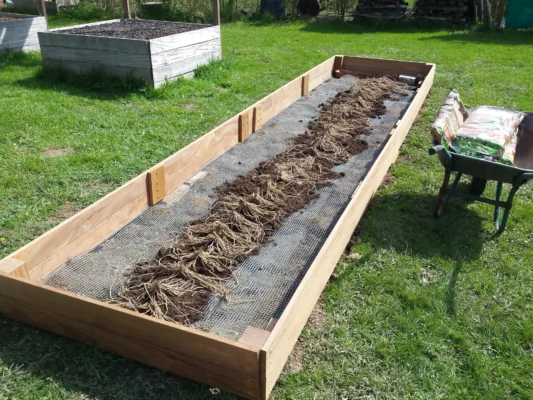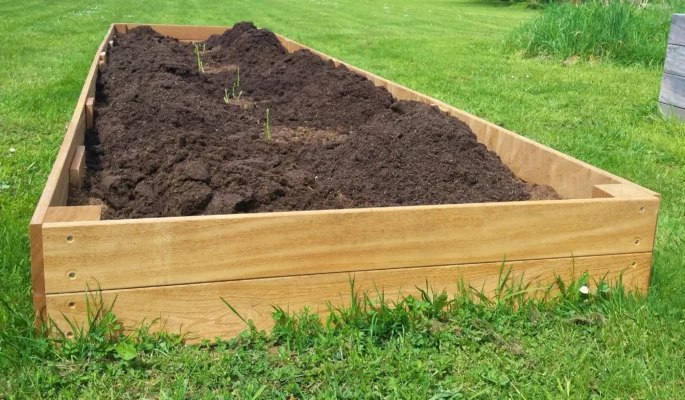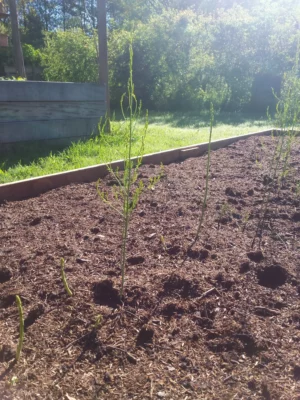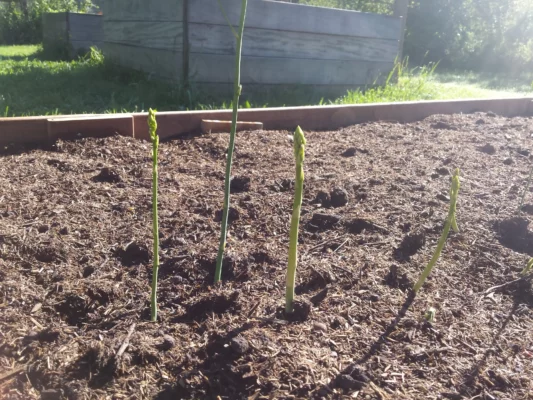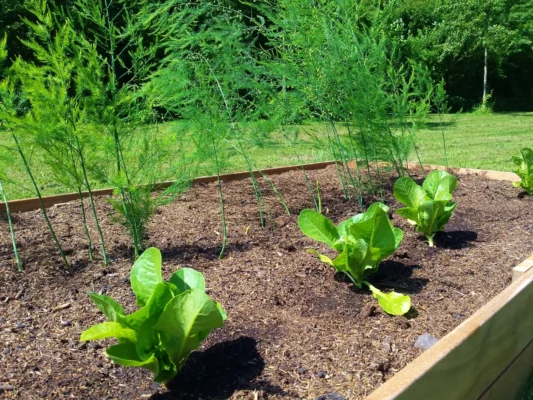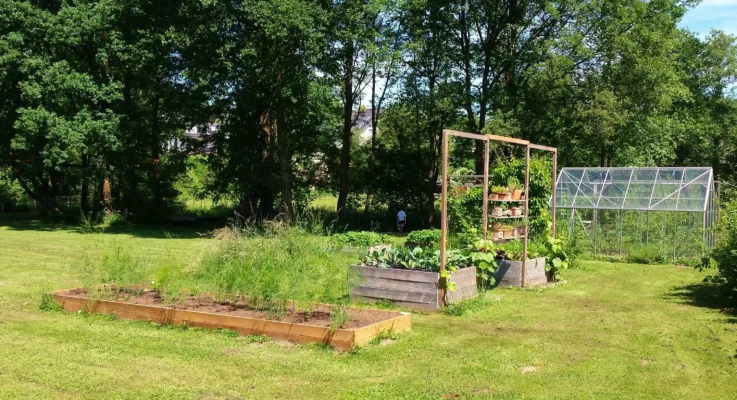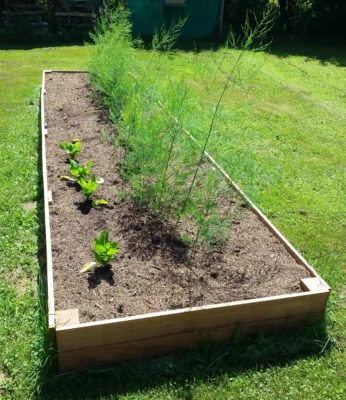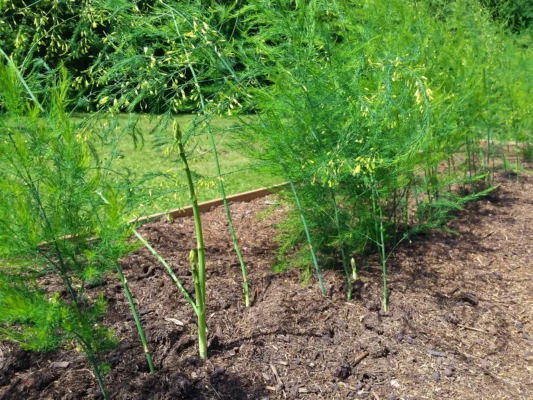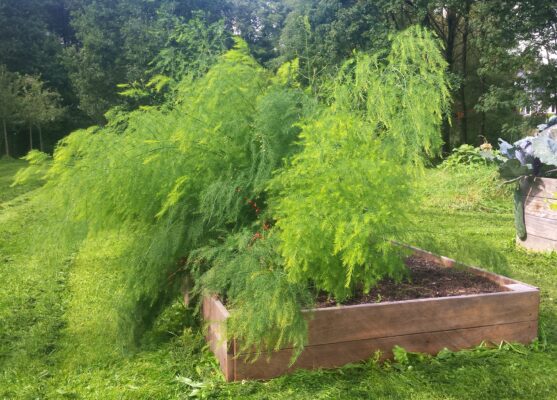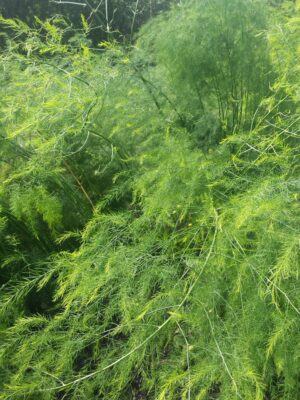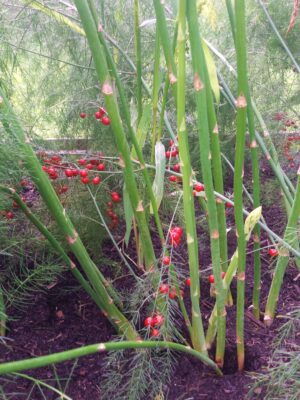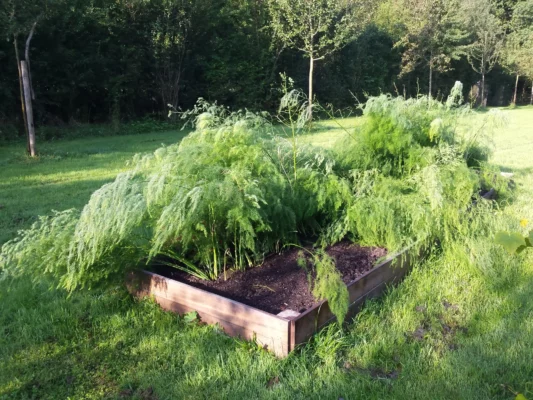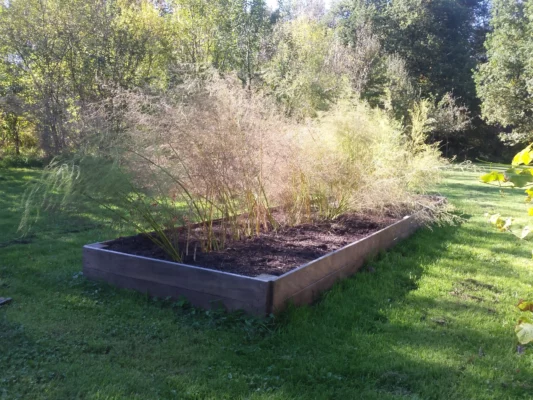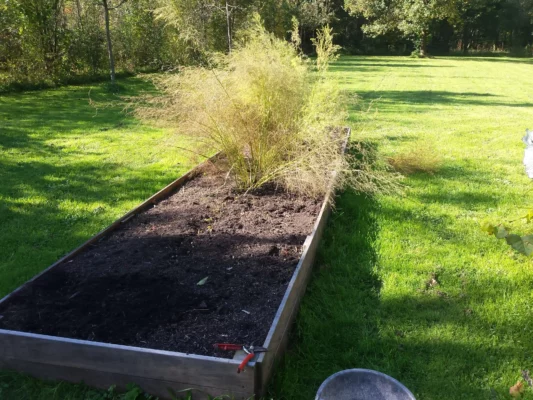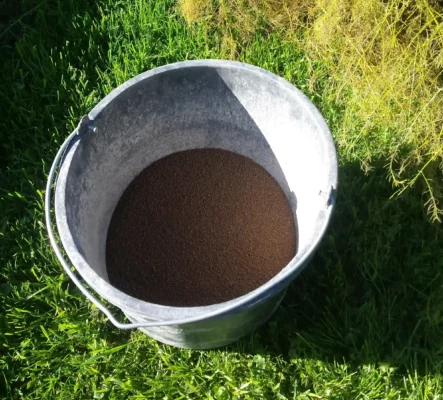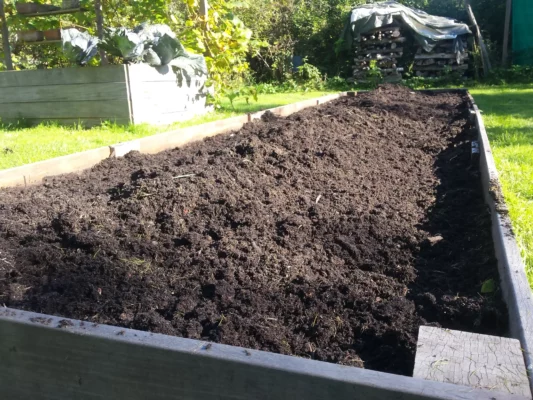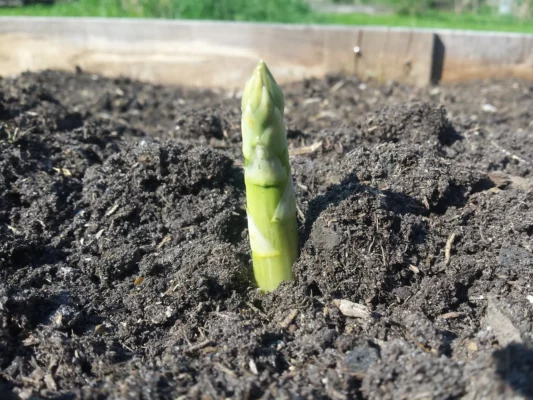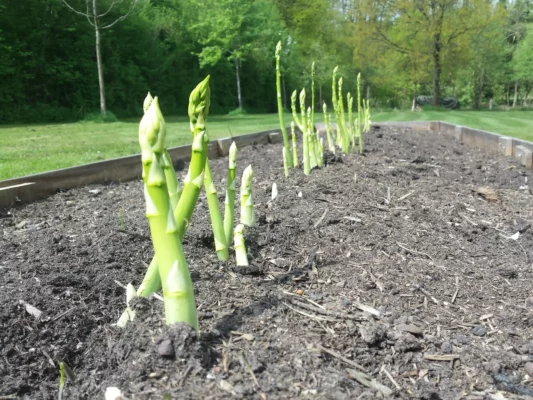Growing green asparagus in a raised bed – creating an asparagus bed in the garden
Asparagus (Asparagus) is a perennial shrub. The rootstock of green asparagus should be at least 20 cm below the soil surface to prevent the plant from suffering frost damage.
Green asparagus does not need foil and is much easier and less labor-intensive to grow than white asparagus.
After the harvest phase, the asparagus grows up to 2 meters high. The delicate shoots with their needle-like foliage are an ornamental feature in the vegetable garden.
We have now planted a raised bed for green asparagus in our vegetable garden and are hoping for a good harvest in the coming years.
Here is some basic information about growing asparagus.
Floors:
Humus-rich soils are particularly suitable, although sandy and loamy soils can also be expected to produce good yields. Less suitable are cold and wet soils that are prone to waterlogging.
Pay attention to the pH value of the soil, strongly acidic soils are unsuitable. Asparagus needs a pH value of at least 5.5. Asparagus plants feel really comfortable with a pH value of 6 and higher. If the pH value is too low, the soil should be limed.
Site selection:
Asparagus loves the sun. For this reason, a sunny spot should be chosen for the asparagus plants. Asparagus should not be planted in areas that have been shaded for a long time, as significantly lower yields can be expected here. As a general rule, if the area is in the shade all morning or all afternoon, it is unsuitable for cultivation.
Asparagus planting density:
30 asparagus plants of the Steiniva variety produce an asparagus row of approx. 5 m. If there are several rows, the row spacing should be at least 1.6 m. The roots of the asparagus plants should be spread out like a fan.
Asparagus bed lifespan
With good care, an asparagus bed can produce a good yield for up to 15 years. After that, the asparagus bed should lie fallow for four years or be used to grow lettuce. The old asparagus plants must be dug up.
Fertilize the asparagus bed:
Before setting out the asparagus plants, good compost soil should be dug in and approx. 350 grams of organic complete fertilizer should be added per 5 metres of asparagus row.
Subsequently, fertilizer is applied in June, August and then again in April with approx. 350 grams of complete organic fertilizer per 5 metres of asparagus row.
Setting time for asparagus plants:
The young asparagus plants are planted in April to mid-May.
Asparagus harvest:
Asparagus is traditionally harvested until St. John’s Day, i.e. June 24. After that, the asparagus should grow freely to gather strength for the following year. It should be noted that asparagus may only be fully harvested after three years.
No asparagus is harvested in the 1st year.
In the 2nd year, 1-2 asparagus spears may be harvested per plant.
In the 3rd year, asparagus can be harvested for five weeks.
In the 4th year it can be harvested until St. John’s Day.
Asparagus yield:
With 30 plants, approx. 1.5 kg of asparagus can be harvested per week in the full yield phase.
Buy asparagus plants:
We purchased our asparagus plants of the Steiniva variety from the online shop of Spargelhof Elsholz. The delivery was fast and the plants were of great quality. Asparagus plants are delivered from mid-March to mid-May. Pre-orders are accepted during the remaining period.
Remove winter weeds:
When the above-ground parts of the plant die back in the fall, the herb must be cut off just below the surface. The haulm is traditionally burned. There is an important reason for this, as the asparagus beetle, a major pest in asparagus cultivation, overwinters in the dead asparagus foliage.
Asparagus plant seeds:
The seeds of asparagus plants are poisonous.
Create a raised bed for green asparagus:
First of all, a suitable location needs to be marked out. We decided on a bed with 30 plants, i.e. 5 x 1.2 meters.
The turf must then be cut off and turned over. You can purchase suitable professional garden tools from Werkzeugschmiede Krumpholz in our online store. Dig in compost and organic fertilizer. If the soil is acidic, add a little lime.
Assemble raised bed and plant asparagus plants:
Then assemble the raised bed. We opted for a raised bed made of Cumaru planks and Cumarukanth wood for the fastening in the corners. The wood is FSC-certified and comes from sustainable forestry in Colombia.
We used 2.74 m and 2.43 m planks for the long raised bed side. We used short sections of our tropical timber for the joints. It is important to always pre-drill and preferably countersink. The wood is so hard that the screws would otherwise cause the boards and squared timbers to crack.
Vole protection made of galvanized rectangular wire should be placed on the bottom of the raised bed. You can buy this at almost any DIY or Raiffeisen store. Then pour in potting soil and place the asparagus plants on the soil.
Now fill the raised bed with humus or inexpensive potting soil so that all plants are well covered. Keep adding soil until the fall until the raised bed is completely filled.
Development of the asparagus raised bed over the seasons
The asparagus bed one week after the asparagus plants were planted.
After just one week, the asparagus plants have grown through the 10 cm layer of humus. The young plants are healthy and vigorous. The stalks are growing noticeably taller every day. Now the raised bed needs to be filled with more bags of potting soil.
Three weeks after planting the asparagus plants
During the heavy night frosts in the 2nd week of May – down to minus 10 degrees in the Oberbergisch district – some young shoots of the asparagus plants froze. However, this did not damage the asparagus any further. New shoots emerged from the soil the very next day.
The raised bed is now filled almost to the brim with humus. The last bags of potting soil will go into the raised bed next week. The asparagus shoots grow very quickly. In the first year the shoots are still quite thin, but in the following years the shoots will sprout much more vigorously.
Six weeks after planting the asparagus plants
The green asparagus is shooting out of the ground, with new shoots appearing every day. At the edges we have planted young radicchio that we have grown in our greenhouse . The first shoots are starting to produce lots of small yellow flowers. The asparagus flowering begins.
Four months after planting the asparagus plants
In September, the red asparagus berries have developed from the female inflorescences. The seeds of the asparagus are found inside the berries and are (slightly) poisonous to humans.
The information center of the University Hospital Bonn states that the berries contain several furostanol and spirostanol glycosides, which can lead to vomiting and abdominal pain if 5-7 ripe berries are consumed. After eating larger quantities, measures may be required to remove the poison.
Five months after planting the asparagus plants
In October, the leaves of the asparagus plants begin to turn yellow. The nutrients migrate from the upper parts of the plant into the rhizome, where they are stored for the coming plant growth over the winter.
When the asparagus spears are weak and hollow, it is the right time to remove the haulm. Pruning too early reduces the yield in the following years, pruning too late can encourage diseases.
In a five-year trial (1990 to 1994) with the variety ‘Huchels Leistungsauslese’, the Geisenheim Research Institute attempted to determine the optimum time for haulm removal. In terms of subsequent yield, haulm removal at the beginning of November proved to be optimal.
However, the right time to remove weeds also depends on the weather conditions and the respective location.
The herb is cut with sharp secateurs just above the soil surface. The remaining stems in the soil are pulled out of the ground in March with a gentle twisting motion.
Once the asparagus weeds have been removed, fertilize with approx. 100 grams of organic fertilizer per metre of asparagus row.
Asparagus is traditionally burned to prevent pest infestation and disease.
The second year April and May
Spring has replaced winter and the asparagus has shot out of the raised bed. Hesitantly at first, but by the third week of April they were full of vigor and full of juice.
The first asparagus is harvested in the first week of May and roasted on the fire with butter and a pinch of brown sugar.

The taste of the sticks is great.
I don’t know if it’s the freshness, the variety or the soil, but the sticks are by far the best we’ve ever eaten. Incredibly juicy and aromatic. It’s a mixture of white and green asparagus, but only the best of both.
